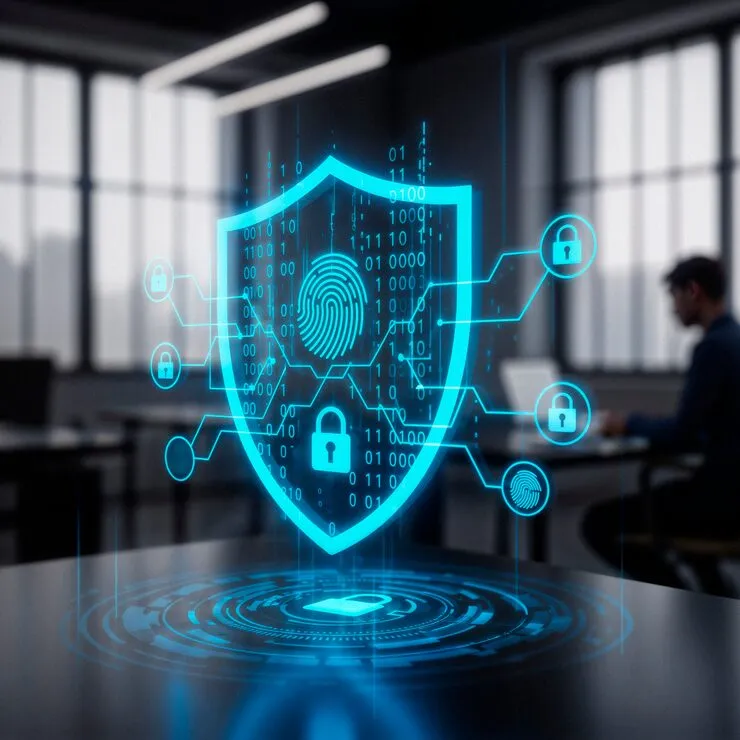- Written by: novaclick
- September 30, 2025
Cybersecurity Best Practices to Protect Your Business Data
In the digital age, data is one of the most valuable assets a business possesses. From customer details and financial records to proprietary research, sensitive information is constantly at risk of cyberattacks. Cybercriminals are becoming increasingly sophisticated, using methods like phishing, ransomware, and social engineering to exploit vulnerabilities. Protecting your business data is not just about compliance—it’s about safeguarding your reputation, customer trust, and bottom line. Here are the most effective cybersecurity best practices every business should follow to keep data safe in 2025 and beyond.
1. Develop a Strong Security Policy
A comprehensive security policy is the foundation of effective cybersecurity. It defines how your business handles sensitive data, who has access to it, and the procedures to follow in case of a breach.
- Clearly outline roles and responsibilities for employees and IT teams.
- Establish rules for password creation, data sharing, and device usage.
- Ensure employees sign and understand the policy during onboarding.
2. Use Strong and Unique Passwords
Weak passwords are one of the easiest entry points for cybercriminals. Encourage staff to use complex passwords and update them regularly.
- Require a mix of uppercase and lowercase letters, numbers, and special characters.
- Implement multi-factor authentication (MFA) to add an extra layer of protection.
- Consider using a secure password manager to store credentials safely.
3. Keep Software and Systems Updated
Outdated software often contains vulnerabilities that hackers can exploit. Regular updates ensure you have the latest security patches.
- Enable automatic updates for operating systems, applications, and security tools.
- Regularly audit all devices to confirm they are running the latest versions.
- Replace unsupported software that no longer receives security patches.
4. Educate and Train Employees
Human error remains one of the biggest cybersecurity threats. Employees should be trained to recognize and avoid potential risks.
- Conduct regular cybersecurity awareness sessions and simulated phishing tests.
- Teach staff how to identify suspicious links, attachments, and social engineering tactics.
- Establish a clear process for reporting suspicious activity or potential breaches.
5. Secure Your Networks
Your network is the gateway to your business data. Keeping it secure is critical for preventing unauthorized access.
- Use firewalls and intrusion detection systems to monitor network traffic.
- Encrypt Wi-Fi networks and avoid using default router credentials.
- Segment networks to limit access to sensitive information.
6. Implement Data Backup and Recovery Plans
Data loss can occur due to cyberattacks, natural disasters, or hardware failures. Regular backups ensure you can recover critical data quickly.
- Schedule automated backups to secure off-site or cloud-based servers.
- Regularly test recovery procedures to ensure data can be restored without errors.
- Keep at least one offline backup to protect against ransomware attacks.
7. Encrypt Sensitive Data
Encryption converts data into unreadable code, ensuring that even if information is intercepted, it remains protected.
- Use end-to-end encryption for emails and messaging applications.
- Encrypt stored data on servers, devices, and cloud platforms.
- Regularly update encryption keys to maintain security integrity.
8. Control Access to Critical Information
Not every employee needs access to every piece of data. Implement a “least privilege” model to minimize risk.
- Assign data access based on job responsibilities.
- Regularly review and update user permissions.
- Deactivate accounts immediately when employees leave the company.
9. Monitor Systems and Respond Quickly
Proactive monitoring helps detect unusual activity before it escalates into a serious breach.
- Use security information and event management (SIEM) tools for real-time alerts.
- Set up automated logs to track login attempts, file changes, and system anomalies.
- Create an incident response plan to act quickly in case of a cyberattack.
10. Partner with Trusted Security Providers
For many small and medium-sized businesses, outsourcing cybersecurity to professional providers can provide expertise and advanced tools that are difficult to maintain in-house.
- Choose vendors with strong reputations and proven security track records.
- Ensure third-party providers follow the same security standards as your business.
- Regularly review service agreements to keep security measures up to date.
Final Thoughts
Cybersecurity is no longer optional—it’s a critical component of doing business in a connected world. By implementing strong security policies, educating employees, and leveraging modern technologies, you can significantly reduce the risk of data breaches and cyberattacks. Remember, the cost of prevention is always lower than the cost of recovery. Start strengthening your defenses today to protect your business, your customers, and your reputation.



